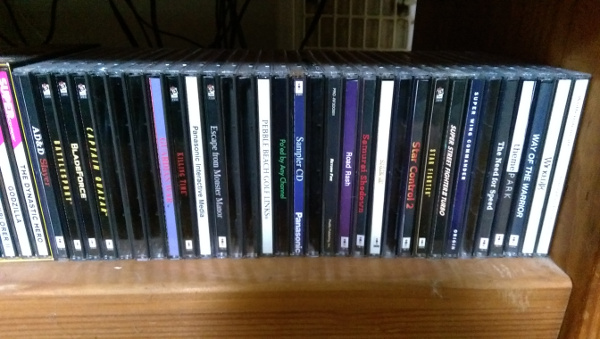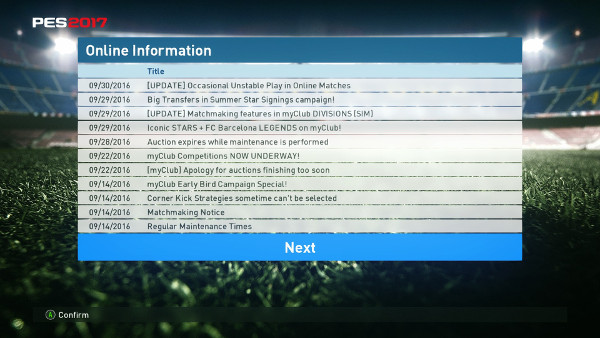I used to hold hope that indie games would fill the "novelty and character" void, but they haven't; most of them play like half-baked tech demos due to miniscule budgets, and the ones that are more fleshed out-- think Wasteland 2, or ARK: Survival Evolved-- are still exceedingly conversative from a style standpoint.
The best way to explain what I mean by "conservative" is to provide contrast: my brother sent me this song from Fatal Fury Special (from 1993) on the NeoGeo; listen how goofy and experimental it is! I'd never even seen or played the game before, but within minutes the song became iconic in my house. Outside of the creeper from Minecraft six years ago, and maybe the squid sisters from Splatoon last year, I can't think of any modern game that has provided such a quintessential element.
What was great about the 80s and early 90s is that gaming was in the "sweet spot" right between today's conservative, hipsterville cargo cult indie games, and the designed-by-the-marketing-department triple-A "experiences"; the budgets were small enough that there was tons of experimentation and risk-taking-- leading to first-order iconic moments and characters (the ones that today'd industry are still milking dry)-- yet large enough to support fully fleshed-out, ambitious creations.
Again, the best way to explain it is via an example for contrast. Here are some of my 3DO games:

On one shelf you have a: crazily-advanced first-person dungeon crawler; a third-person helicopter shooter where you explore large cities; a Desert Strike-style game with a weird superhero; a boxing simulator with historical commentary; a golf game featuring volcanoes; a proper Wing Commander title; a sandbox space sim with the best writing in the history of the medium; a two-player "capture the flag with tanks and helicopters" game; a theme park sim title; and much more. Hell, there's even a modernized take on Ballblazer for pete's sake!
And as experimental as every single one of these games is, they are all triple-A, with the level of polish, production values, completeness, and quality one would expect. Best of both worlds indeed.
Er, wait, did I say "quality"? Because you certainly can't find that from today's triple-A games, which is another way in which games have gone backwards. Broken and buggy gameplay, server crashes, day-one multi-gigabyte patch downloads, and PR department scrambling are the norm for today's game industry.
I've been playing the just-released Pro Evolution Soccer 2017 lately, and it's funny how perfect of a microcosm it is: the core game engine plays great, but stylistically it's quite literally as conservative as you could get.
On top of that, the game also has this big split between the old school single player modes-- which work right "out of the box", and which are all I play (Master League)-- and the new-fangled "today's gaming" modes. Every time I run the game, I get a full screen of notices: "servers are down, we deeply apologize!", "be sure to check out all of the new micro transaction items!", "match making is broken, sorry!" I have never seen a notice for the "straight from 1996" single player modes.

The core issue behind all of this is that video games have become main stream. And every time something gets to the main stream popularity level, it goes to shit. I was reading an article the other day that in 2001 (so, Dreamcast era) only 20% of high school kids played an hour of video games per day; today the number is 90%.
This means that the pasty white intellectual nerds like me, with a penchant for fantasy, who would sit around hunched over in their underwear playing Atari 2600-- the audience for whom video games were targeted in the 70s, 80s and 90s-- have been supplanted in the marketers' eyes by the dumb gridiron jocks, black bros from the hood, smart phone social network feminist nazis, and people who otherwise wouldn't touch video games if the medium wasn't popularily accepted.
So out goes the Ballblazer adaptations, out go the flight sims, out go the goofy Joe stage songs from Fatal Fury, and in come the Hollywood cinematics, in come the "share this with your friends on Facebook" integrations, and in comes the dubstep music. And when a designer does dare toe the line with a fearless (and even then not really) gameplay idea, he daren't risk alienating the hordes of "this is gay!" chad gamers by having any sort of of non-copy and paste aesthetic.
Still, and on a positive note, there are those very, very occasional moments of 80s and 90s novelty, in the form of two games I've already mentioned: Minecraft, and Splatoon. Both have first-order originality, both are high production value and fully-fleshed out, and both have provided the world with iconic aspects. And interestingly, both games have been monumental successes!
My current hope is that marketers and game designers will see the prominence of games such as those, and strike out into new territory more often. But that might be too much to ask in a world where totally bland, cookie-cutter games that have "Halo" in the title sell ten million copies in just a day or two.